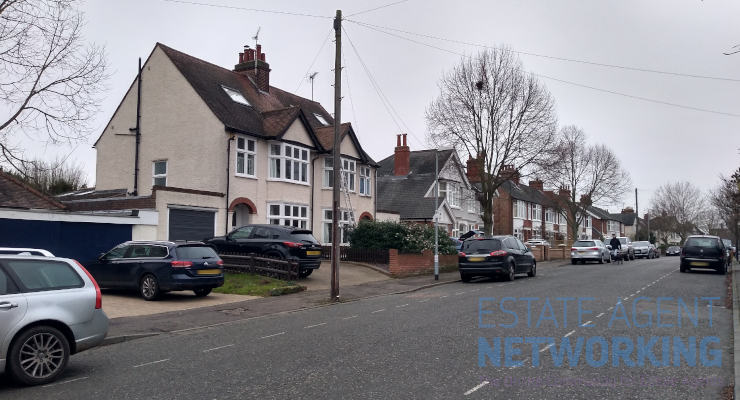Pollution-free properties secure 57% more rental income
The latest research by leading lettings management platform, Howsy, has found that areas, where CO2 emissions are at their lowest, are home to much higher average rental costs compared to those with higher levels of CO2.
Howsy looked at the average cost of renting across 65 of the largest towns and cities based on population size, as well as the CO2 emissions per capita in each location, and what impact this had on the cost of renting.
While many living things emit CO2 when they breathe, it is widely considered as a pollutant due to the excessive levels produced by cars, planes and power plants, as well as other land uses and the burning of fossil fuels.
The research shows that when looking at areas based on the CO2 emissions per capita, there is a clear trend whereby areas home to a lower level cost more when it comes to the average rent, compared to those with much higher levels.
The lowest bracket, areas where there are 3.00-4.00 CO2 emissions per capita, are home to an average rental price of £800. This drops to £760 per month in areas with 4.01-5.00 Co2 emissions per capita, and again to £685 in the 5.01.6.00 threshold and £559 in the 6.01-7.00 threshold.
In areas with the highest level of CO2 emissions at 7.01 per capita or higher, the average rent is just £511, a 57% difference when compared to the other end of the Co2 rental scale.
When looking at the 10 worst areas with the highest levels of CO2 per capita, just one is home to a higher average rent when compared to the current UK average of £953 per month – Crawley where rents average £990 per month.
Swansea is the worst area for a mix of poor rental returns and pollution with 22.43 tons of CO2 emitted per capita and an average rental price of just £552.
Similarly, Middlesborough, Doncaster, Warrington and Newport are home to high levels of CO2 emissions and below average rental prices.
But it’s not all bad news if you’re a tenant. When looking at the top 10 areas with the lowest CO2 emissions per capita there are seven locations that come in with an average rent below that of the current UK average.
Plymouth (£604), Ipswich (£663), Southampton (£799), Luton (£813), Worthing (£832), Southend (£843) and Bournemouth (£867) are all cheaper than the UK average when it comes to renting with CO2 emissions per capita coming in below 3.5 tons per capita.
Founder and CEO of Howsy, Calum Brannan, commented:
“As a landlord, looking to less polluted areas seems to provide the best rental income when it comes to a buy-to-let investment and it’s interesting to see how less pollution directly correlates with higher rental prices.
As a tenant, the cost of some fresh air is likely to cost you when looking for a place to let, but there are still plenty of pockets that are not only home to a low level of Co2 emissions but also below average rental prices.
Unfortunately for many, the nature of renting will mean fresh air is low on the list of requirements for a home, but it’s certainly worth remembering if you’re looking to invest in a buy-to-let and could be the cure when turning a profit despite the government’s attempts to dampen appetites in the sector.”
|
Emissions and the average rent
|
||
|
Category – CO2 emission per capita (tons)
|
Average monthly rent
|
Difference between the top and bottom bracket
|
|
3.00-4.00
|
£800
|
56.56%
|
|
4.01-5.00
|
£760
|
|
|
5.01-6.00
|
£685
|
|
|
6.01-7.00
|
£559
|
|
|
7.01 +
|
£511
|
|
|
UK average = 5.32
|
£953
|
|
|
Notes:
|
||
|
> Based on the top 65 cities and towns by population size
|
||
|
> Categories of emission per capita vs average rent
|
||
|
Ranking – by highest emissions per capita
|
||
|
City/town
|
CO2 emissions per capita 2017 (tons)
|
Average rent (2019)
|
|
Swansea
|
22.43
|
£552
|
|
Middlesbrough
|
12.06
|
£469
|
|
Doncaster
|
6.67
|
£503
|
|
Warrington
|
6.61
|
£635
|
|
Newport
|
6.12
|
£539
|
|
Preston
|
5.81
|
£564
|
|
Wakefield
|
5.77
|
£548
|
|
Barnsley
|
5.59
|
£494
|
|
Aberdeen
|
5.43
|
£735
|
|
Crawley
|
5.32
|
£990
|
|
Ranking – by lowest emissions per capita
|
||
|
City/town
|
CO2 emissions per capita 2017 (tons)
|
Average rent (2019)
|
|
Southampton
|
3.62
|
£799
|
|
London
|
3.61
|
£1,697
|
|
Bournemouth
|
3.48
|
£867
|
|
Plymouth
|
3.4
|
£604
|
|
Exeter
|
3.39
|
£1,084
|
|
Luton
|
3.24
|
£813
|
|
Southend
|
3.23
|
£843
|
|
Brighton
|
3.22
|
£1,298
|
|
Worthing
|
3.11
|
£832
|
|
Ipswich
|
3.02
|
£663
|
|
Sources
|
|
|
Emissions data
|
|
|
Average private rent
|
|







